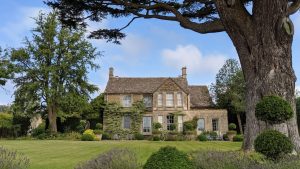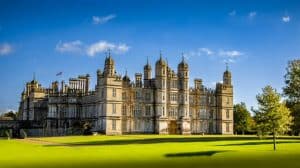Understanding Timber Windows Regulations in UK Listed and Graded Buildings
Introduction to Timber Windows Regulations
Preserving the historical and architectural integrity of listed and graded buildings in the United Kingdom is a priority for conservation authorities. One crucial aspect of this preservation effort involves the regulation of timber windows, which play a significant role in maintaining the authenticity of these structures. In this article, we will explore the rules and regulations governing timber windows in UK-listed and graded buildings.
Importance of Timber Windows
Timber windows are a distinctive feature of many historical buildings, providing a glimpse into the craftsmanship of bygone eras. The use of timber not only contributes to the aesthetic appeal but also reflects the traditional building techniques employed during specific periods in history. Preserving these windows is essential for maintaining the overall character and charm of listed and graded buildings.

The Listed Building Consent
What is Listed Building Consent?
Listed Building Consent (LBC) is a legal requirement for any alteration or renovation work on listed buildings. This includes changes to timber windows and glass. Obtaining LBC ensures that proposed alterations are in line with the preservation of the building’s historic fabric.
Timber Window Alterations
Like-for-Like Replacement:
-
- When replacing timber windows, the general principle is “like-for-like.” This means using materials that match the original in terms of design, material (where possible), and colour.
- Example: If the existing windows are made of oak, the replacement should also be oak.
Detailed Specifications:
-
- Detailed specifications for any timber window replacements are typically required as part of the LBC application. This includes information on the type of wood, glazing, hardware, and finishes used.
- Example: Provide a detailed specification for a new sash window, including the type of timber to be used (e.g., Oak, Sapele, Accoya wood), glazing specification, hardware details, and any historically accurate paint finish.
Graded Buildings and Their Impact on Timber Windows
Grading System
Buildings in the UK are graded to reflect their historic and architectural significance. There are three grades: Grade I (exceptional interest), Grade II* (particularly important), and Grade II (nationally important and of special interest). The higher the grade, the stricter the regulations.
Grade I and II* Buildings
- Preservation of Original Features:
-
- Grade I and II* buildings often have stringent regulations, emphasising the preservation of the original features of the property, which include the timber windows and doors.
- Example: The replacement of any timber window in a Grade I Georgian townhouse may require consultation with heritage experts as well as conservation officers to ensure accuracy in the design and materials used as replacements.
Grade II Buildings
- Balancing Conservation and Adaptation:
-
- Grade II buildings may allow for a degree of adaptation while still preserving the overall character.
- Example: Upgrading timber windows for improved energy efficiency may be permissible in Grade II buildings, but the design and materials to be used must be sympathetic to the original style or design after consultation with your local conservation officer.
Article 4 Direction
Article 4 Direction is a planning regulation in the United Kingdom that allows local authorities to restrict permitted development rights in specific areas. Its primary purpose is to control changes to the external appearance of buildings and protect the character and amenities of a designated area. When an Article 4 Direction is in place, property owners may need to seek planning permission for alterations that would otherwise be permitted without approval.
One key application of Article 4 Direction relates to heritage conservation, including the preservation of historic buildings and their features. In areas with rich architectural heritage or designated as conservation areas, Article 4 Directions are commonly used to maintain the distinct character of the built environment. This includes the protection of traditional materials, architectural styles, and, relevant to our discussion, features like timber windows.
In the context of timber windows in listed and graded buildings, an Article 4 Direction may reinforce or supplement existing regulations. For instance, it could require property owners to obtain planning permission before altering or replacing timber windows, even if they fall under the “like-for-like” principle. This additional layer of control ensures that changes to the windows align with the broader goals of preserving the historic fabric of the area.
Property owners and developers should be aware of the specific Article 4 Directions applicable to their location, as these can vary between local authorities. Understanding and complying with Article 4 Directions are crucial steps in navigating the regulatory landscape associated with timber windows in historic and protected buildings, contributing to the broader efforts of preserving the cultural and architectural heritage of the UK.
Owners Responsibility
Ultimately, it is the responsibility of every property owner to check before undertaking any work on or to the property that it falls within any local listed building, conservation, Article 4 Direction, and any other area restrictions.
Timber Windows Regulations in UK-Listed and Graded Buildings
Preserving timber windows in listed buildings and buildings of historic importance is a delicate balance between conservation and adaptation. The rules and regulations in place aim to safeguard the unique historical and architectural characteristics of these buildings. Whether obtaining Listed Building Consent or adhering to any specific requirements of historic buildings, it is crucial to approach timber window alterations with a deep understanding of the building’s heritage and the importance of maintaining its authenticity.


